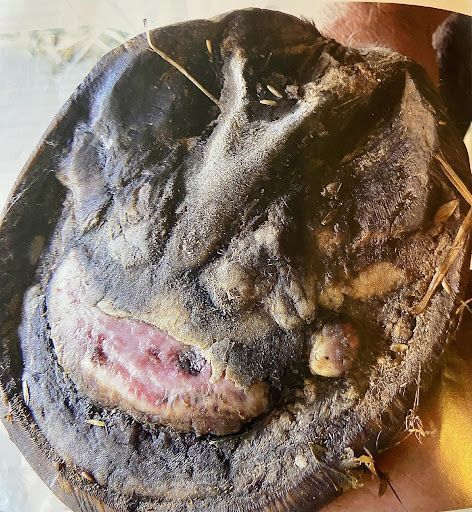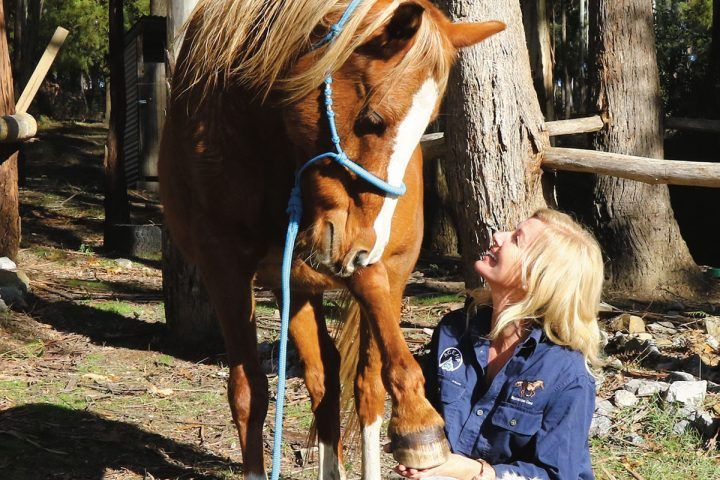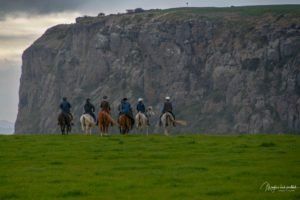WHAT MAKES A GOOD TRAIL RIDING HORSE?
Wild About Hooves • 25 July 2019
We are blessed at Australian Horse Adventures to have an extraordinary team of horses in our operation.
We have a core group, the “A team” who have been with us since they were young, or were bred by us. They have clocked up thousands of kilometres under saddle with us (trail riding, endurance and stock work) and with whom our whole adventure business evolved.
Then joining them, is our team of preloved horses. We are proud and delighted to acquire “hand me down” horses. Usually these horses belonged to friends, who sought a good home and feel their horse would suit a career in tourism.
It’s also part of our commitment to minimal impact on the environment. With so much wastage in the horse industry its important to our ethos and be conscious of how we can make a difference.
Recycling horses feels right to us.
So what do we look for in a horse to join our team?
If you check out our website or social media photos you will see we are big fans of Arabian horses.
They are stunning horses to look at and so photogenic. They are also much more than a pretty face.
Intelligence: Is high on our priority list. When we work with a horse, we want them to have a good dose of “horse sense”. We encourage them to problem solve and make wise decisions. The obstacle course, our bush trails and challenges we create, give us the opportunity to assess if the horses can think through the tasks. To do this, we pay close attention to ensure every request we make when training is understood but we are also respectful of what each horse can offer. We focus on patience, trust and respect.
Experience:
The less experienced guests we have, the more experienced horse we partner them up with. “Green” riders are teamed up with our “been there, done that” horses.
Personality: Our horses are bursting with personality. We look for a horse with personality and let it shine. As trainers and guides we get to know them intimately so that we can read their minds and they need to be able to read ours or respond to our cues.
Our horses have their own biographies that describe each horse perfectly. Guests can read through these at the tour induction to get a feel for the individual personalities of our team. We then aim to match horses and guests based on compatible personalities. It makes for a great partnership and a memorable holiday for our guests.
Conformation: We look for a balanced horse – it’s the one secret to lifelong soundness and maximum performance. We are asking our team to work for years in training, competition and trail riding, they must be able to withstand the concussion, the distances and demands. Our ultimate challenge is to work with each horse as an individual and recognise what is balance and soundness for each one.
With our hoof fetish as hoof care educators, good, strong, healthy, balanced hooves and sure-footed horses are super important to us.
We look for good movers, who are efficient with their energy and comfortable to ride.
Personality: Our horses are bursting with personality. We look for a horse with personality and let it shine. As trainers and guides we get to know them intimately so that we can read their minds and they need to be able to read ours or respond to our cues.
Our horses have their own biographies that describe each horse perfectly. Guests can read through these at the tour induction to get a feel for the individual personalities of our team. We then aim to match horses and guests based on compatible personalities. It makes for a great partnership and a memorable holiday for our guests.
Conformation: We look for a balanced horse – it’s the one secret to lifelong soundness and maximum performance. We are asking our team to work for years in training, competition and trail riding, they must be able to withstand the concussion, the distances and demands. Our ultimate challenge is to work with each horse as an individual and recognise what is balance and soundness for each one.
With our hoof fetish as hoof care educators, good, strong, healthy, balanced hooves and sure-footed horses are super important to us.
We look for good movers, who are efficient with their energy and comfortable to ride.
Attitude: Do they want to work with us? And can they work together as a team? It’s the question we ask the horse through observation.
The horses in our operation have an amazing work ethic because they enjoy what they do, they love a job, they are willing, courageous, fiercely independent, and fun, they embrace the fitness training and line up in the queue, day after day to join us at work. They build their strength and endurance to be able to take our guests on epic adventures week after week.
“A horse is a horse of course” Mr Ed
When work finishes, the horses get to do their thing.
They live together a herd in a big paddock, they have access to food and water, they roll, they snooze, they get dirty, they are without rugs, without shoes. They are free to go feral. And this works for us and for them.
Success with our team lies in letting them be horses and building partnerships not slaves. And it shows with a team who are willing, happy and responsive. We are in constant admiration for what they will do for us. They are super stars. There is no mountain too high, no river too wide, no challenge to tough for our horses.
They are what makes Australian Horse Adventures so special and our guests reviews so favourable.

Laminitis kills thousands of horses every year, and leaves thousands of others debilitated with lameness. It will and can affect any horse. And for you, the horse owner it can be devastating: you feel guilty and heartbroken at your horses suffering, confused with all the information as it is typically explained by professionals in scientific terms that can be difficult to understand, costly veterinary bills and you have the major task of nursing your horse back to recovery. . Unseasonal weather patterns around Australia with abundant rain and sunshine saw laminitis at a near epidemic last year. The reason being, that the environmental conditions can trigger increases in the sugar, starch and fructan. These collectively known as non-structural carbohydrates can cause laminitis in any horse or pony. Alarm bells ring this spring!! Be warned and be prepared, for prevention is better than cure.

The extraordinary relationship between humans and the horse has been running since before the birth of Christ. Indeed, there is evidence our domestication of horses goes as far back as 3500 BC. And ever since we recognised the utilitarian value of the horse, there has been the horseshoe. The use of horseshoes has become an almost unquestioned tradition. Humans have been nailing shoes onto horses’ hooves for well over a thousand years. Who can remember back to a time otherwise?

